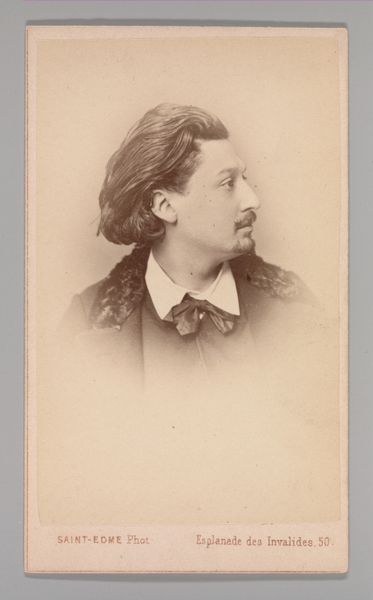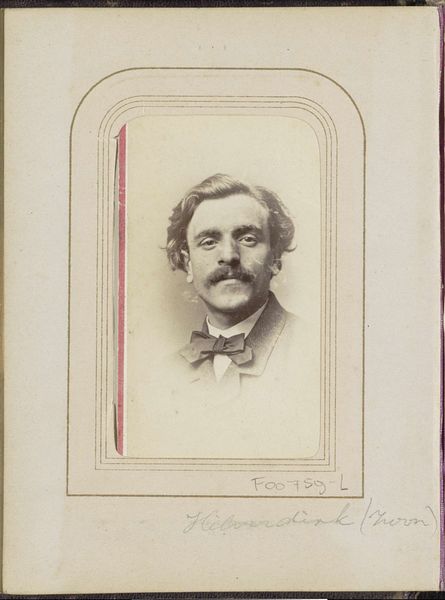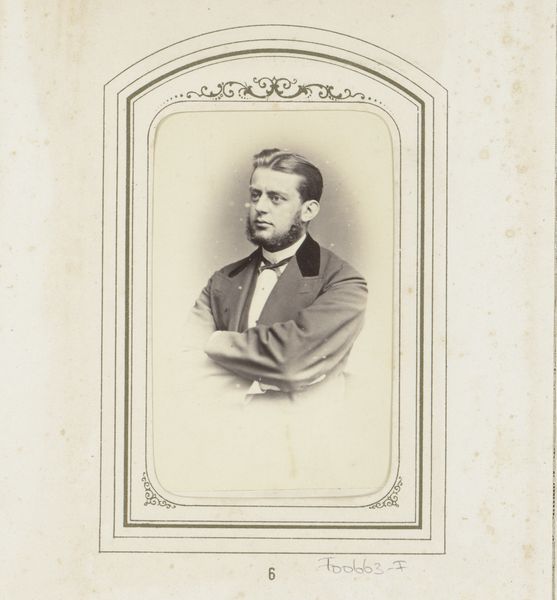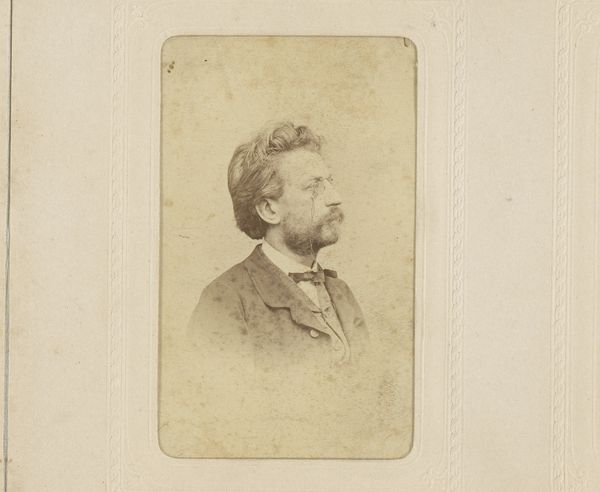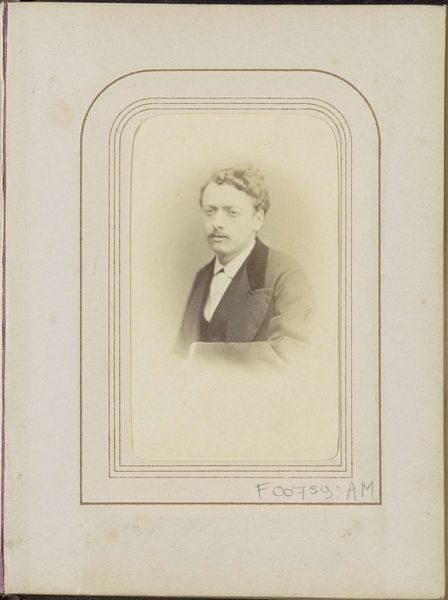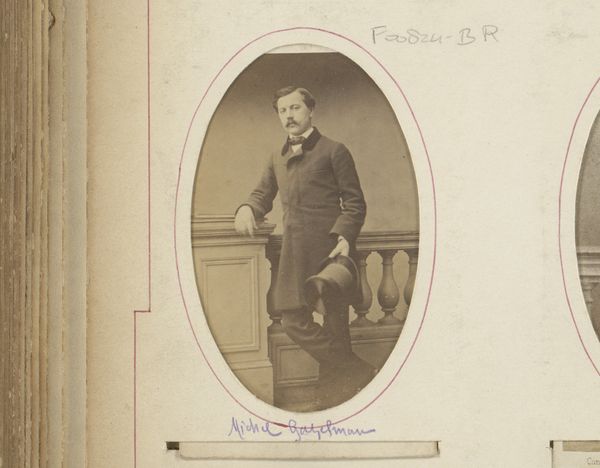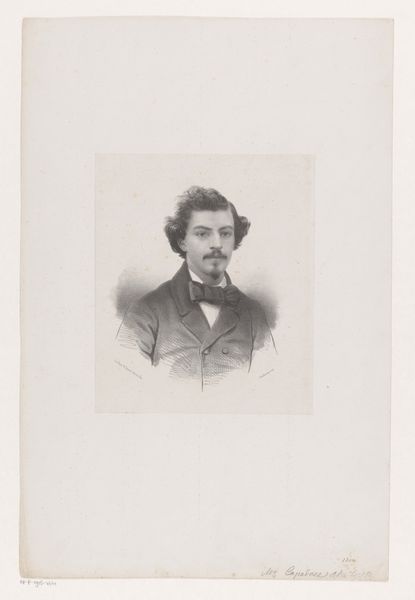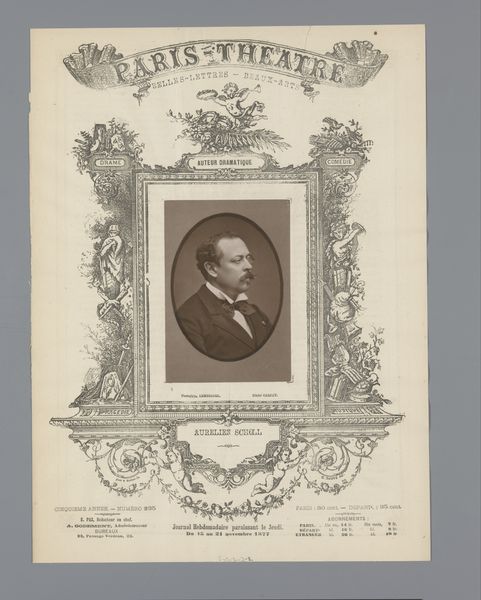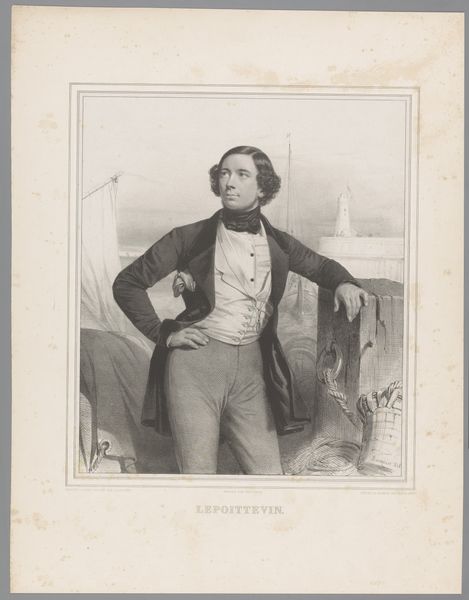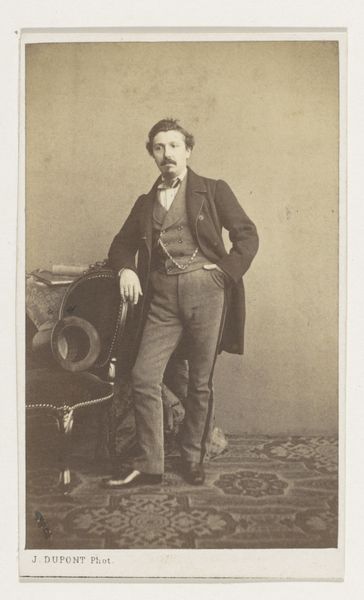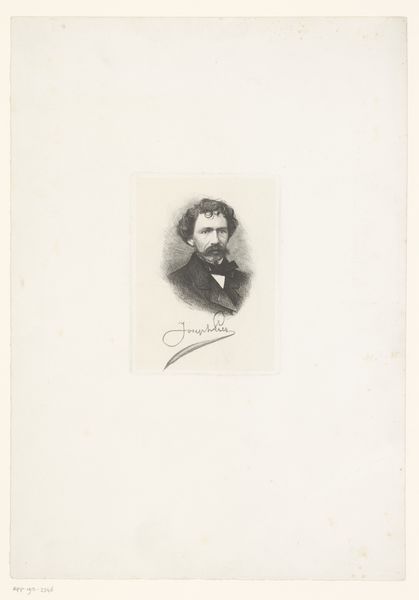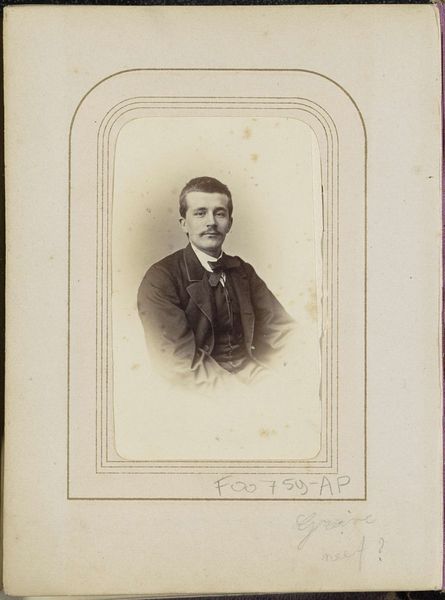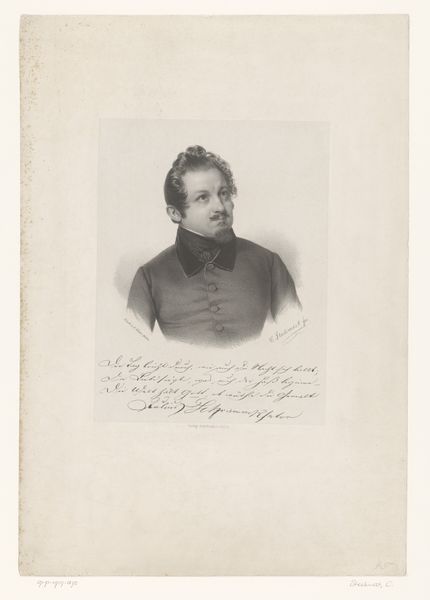
Portret van Philibert Rouvière (1809-1865), Frans acteur before 1865
print, etching, photography
portrait
impressionism
etching
photography
19th century
Dimensions: height 130 mm, width 90 mm, height 373 mm, width 276 mm
Copyright: Rijks Museum: Open Domain
Editor: We're looking at a portrait of Philibert Rouvière, the French actor, made before 1865, likely by Etienne Carjat. It’s a print, using etching and photography techniques, and it gives off a strong, almost theatrical air, fitting for its subject. What do you see in this piece? Curator: Beyond its surface portrayal, I see a confluence of artistic, social, and political forces. Photography at this time was still grappling with its identity as art, often imitating painting. Considering Rouvière was known for his dramatic, almost Romantic acting style, how might this portrait reflect, or perhaps even challenge, the performative aspects of identity in 19th-century France? How does the medium itself shape or distort that identity? Editor: That's interesting! I hadn't considered the performative aspect in the photograph itself. So, the way Carjat has posed Rouvière and used the etching techniques might be exaggerating or commenting on the constructed nature of his public image? Curator: Precisely. And think about the rise of celebrity culture at this time. Rouvière, as a public figure, becomes a commodity. This image circulates, consumed by audiences. It embodies a particular kind of masculine identity – serious, intellectual, perhaps even a bit tortured. Who was this “portrait” for, and how might it have reinforced certain power dynamics or social expectations around masculinity and performance? What do you make of his costume? Is there more to it than meets the eye? Editor: I didn't catch that aspect either, but that gives a whole new dimension to analyzing a portrait – thinking about its social function, beyond just aesthetics. Curator: Exactly! It prompts us to question not only who is being represented, but why, how, and for whom. By engaging these questions and thinking about audience reception, we can expand our understanding of art's significance and role in shaping culture and identity. Editor: I’ll definitely keep that in mind when I’m studying other portraits! There's so much to unpack.
Comments
No comments
Be the first to comment and join the conversation on the ultimate creative platform.
